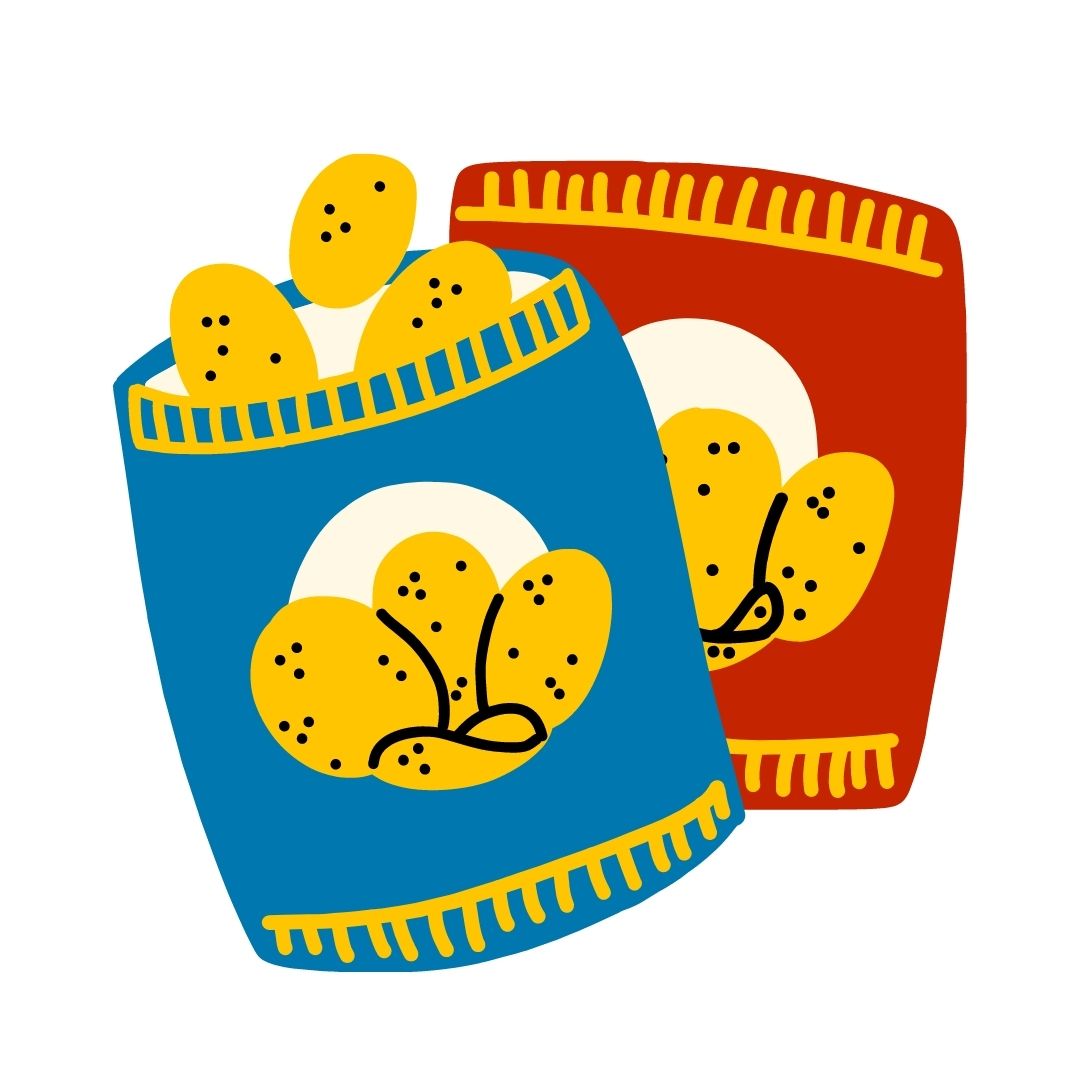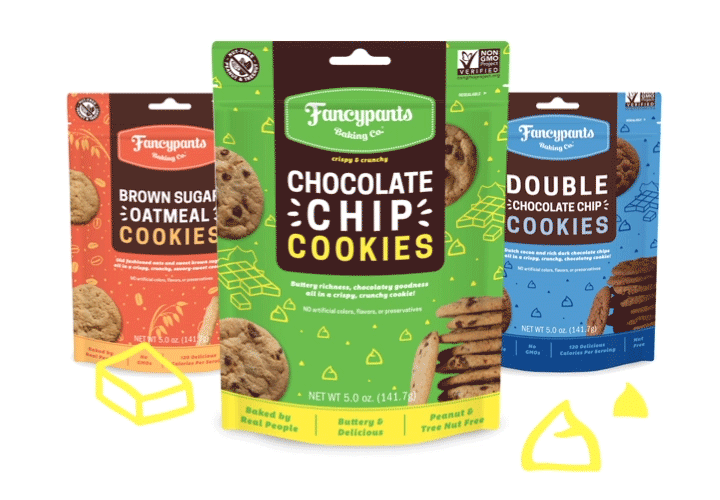Healthy and Delicious: Consumers Have High Demands for Today’s Snacks 1/7/2022
 Over the past decade, snacking has increased, and according to the 2019 IFIC Foundation’s Food and Health Survey, one-third of respondents say they snack a few times a week, and nearly 25% of those respondents said they snack once a day. The COVID-19 pandemic has also played a role in the increase in consumer snacking—an NPD study found that 37% of consumers felt it was important to have sufficient snack foods on hand during the pandemic. Now, the consumer packaged goods (CPG) industry is even seeing a slow shift of snacking replacing actual meals, opening up new doors for snack brands to capture the consumers who are all about snacks, all the time—or even just sometimes.
Over the past decade, snacking has increased, and according to the 2019 IFIC Foundation’s Food and Health Survey, one-third of respondents say they snack a few times a week, and nearly 25% of those respondents said they snack once a day. The COVID-19 pandemic has also played a role in the increase in consumer snacking—an NPD study found that 37% of consumers felt it was important to have sufficient snack foods on hand during the pandemic. Now, the consumer packaged goods (CPG) industry is even seeing a slow shift of snacking replacing actual meals, opening up new doors for snack brands to capture the consumers who are all about snacks, all the time—or even just sometimes.
The caveat to this is that when many consumers think of snacks, what comes to mind are salty or sweet treats that are, well, maybe not the best to be consuming daily. Those types of snacks don’t always mesh with many consumers’ shift toward healthier eating, and as consumers request healthier options to curb their hunger pains, suppliers have listened. It used to be that when you talked about healthy snacks, a vision of carrot sticks—and maybe a side of hummus if you were feeling fancy—came to mind. These days, healthy snacks have gone beyond the basics.
Beyond the basics
We’re not knocking carrots and hummus, but healthy snacks today go beyond just their ingredients. While flavor and taste are the main drivers for healthy snacks, consumers are also considering the values behind their snacks: Is this a sustainable brand? Are they organic? Plant-based? Natural? Are they transparent in their sourcing and production processes? These questions influence many consumer purchases and have paved the way for emerging brands that are now driving trends in healthy snacks.
One such trend in healthy snacks is upcycling, or using innovative processes to take byproducts that would normally be tossed in the garbage and create something both delicious and better-for-you (and often better-for-the-planet).
“Upcycling is both a trend and necessity,” says Camilo Bernal, Co-Founder of The Other Side of Coffee. “More people are rethinking how they consume and are prioritizing sustainability, and functional ingredients. As shoppers become more aware of waste, there is a growing interest for upcycled, rescued, and repurposed ingredients and packaging.”
Maura Duggan, President and Founder of Fancypants Baking Co., in Walpole, MA, which makes upcycled vanilla oat milk cookies using the pulp byproduct of oat milk production, is also seeing a drive toward healthy snacks that provide benefits. Whether it’s reducing food waste, or products with lower sugar, healthy fats, or natural ingredients, she notes, consumers are “also looking for products made with a purpose, like those that have a positive effect on social and/or environmental causes.” Fancypants, she adds, donates 1% of the profits from its keto cookie lines and upcycled cookie line to local environmental groups through a partnership with 1% for the Planet.

Functional ingredients are also trending in healthy snacks, meaning consumers are getting more benefits from the snacks they consume. One reason for this rise, says Chris Peruzzi of The Functional Chocolate Company, simply comes down to pill fatigue.
“Pill fatigue has become a reality with consumers, and the inherent challenge for compliance associated with pills,” he says. “Frankly, a functional food is just a much more pleasurable experience in which to get your desired nutrients.” Functional foods, he adds, have been around in various food channels for decades, and now they’re moving more heavily into snacks.
As these trends drive sales of healthy snacks up, both suppliers and the retailers that love them can strike while the oven (or air fryer) is hot to give consumers innovative healthy snacks that taste good and do good.
“Upcycled products fit in perfectly,” says Duggan. “Cookies are a familiar snack, but cookies made with upcycled ingredients also provide a direct solution to eliminating food waste and fighting climate change.”
“Retailers can be responsive to these shoppers by carrying a greater assortment of better-for-you ingredients from smaller innovative brands,” adds Bernal. “They can also aid shoppers’ discovery and education by providing supporting information on these new ingredients. “
Peruzzi notes that movement within merchandising sets are catering to consumers looking for functional foods, and retailers are creating dedicated sets to this category. “We feel this will become more mainstream and widespread in the FDM channels sooner than later,” Peruzzi says, adding that functional foods will follow the example of the natural and wellness channels that created such sets for early adopters.
The pandemic pushes healthy snacks forward
It is undeniable that the COVID-19 pandemic has drastically changed the way consumers shop as well as how they eat. And that goes for how they snack, too. A 2020 Hartman survey shows that 25% of consumers said they chose more healthy snacks since the pandemic; 37% more frequently looked for low-sugar or low-salt options; another 37% chose nutritious snacks more often.
“The pandemic was like a giant amplifier for demand,” says Philip Kosak of Carolina Fine Snacks, Greensboro, NC. “People stayed home and bought groceries. Less distractions from the reality of bad choices in eating habits has created consumer awareness consequently driving change in purchasing habits trending to healthier choices.”
With so much time at home, consumers’ sense of empowerment over their food choices rose. Says Peruzzi, “People have consistently been self-educating more, and empowering themselves to be more responsible for their personal health.” In turn, that has influenced their decisions on the types of products they buy and consume, particularly when it comes to snacks.
The pandemic has spotlighted the need for strengthened immunity and supporting mental health, notes Bernal. “And since shoppers are now more accustomed to researching and buying online, they are able to discover and purchase brands and ingredients beyond what’s available in their local grocery or specialty stores.”
Snack time of tomorrow
Consumers will never stop snacking, and the trend toward snacks that are both delicious and healthy isn’t slowing down. Knowing this, what’s on the horizon for healthy snacks? Where will the category take consumers—or vice versa—next?
“We love to snack in the U.S., so it is not a simple compromise to just reduce total consumption,” Kosak explains. Healthy alternative snacks need to focus on developing ways to compete with the tastes and textures of mainstream snacks, he adds, noting that consumers “want to enjoy a snack without guilt, one that tastes fantastic. Manufacturers will focus on this when they become convinced the demand is here to stay.”
Looking toward the future of healthy snacks, consumers’ desire to do good while eating well will also continue to drive category growth.
“Research shows that consumers want to make a positive impact by shopping for responsibly sourced and manufactured products,” says Duggan. “Companies that are dedicated to making upcycled snacks provide a solution for these consumers and I think that is a trend that will stay forever.”
The Functional Chocolate Company’s Peruzzi notes that innovation is and always has been the lifeblood of the natural products industry. “There will undoubtedly be more and more offerings throughout the snack category that will offer more than just to satiate the consumers’ palate for sweet and savory,” he says, adding that they will also include functional ingredients to help or address nutrient uptake for additional benefits.
What a delicious future it will be.
Editor's Note: ECRM has several upcoming programs for buyers and sellers of healthy foods:
- Natural, Organic & Healthy Foods - Center of Store (June 13 to 16, 2022)
- Better For You Candy (June 15 to 16, 2022)
- Natural, Organic & Healthy Foods - Perimeter of Store (August 16 to 18, 2022)


Isabel is the Content Marketing Manager at RangeMe. She is curious about the humans behind the brands on RangeMe and what inspires them to grow their business. Isabel is also the first of her name, gluten intolerant, destroyer of chocolate, recycler of plastic, and mother of content.